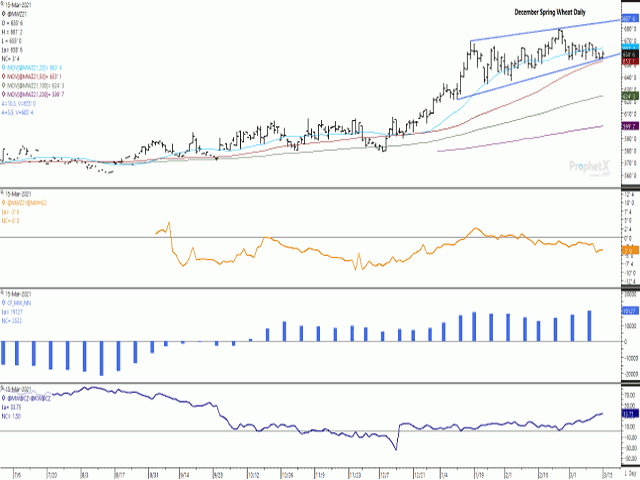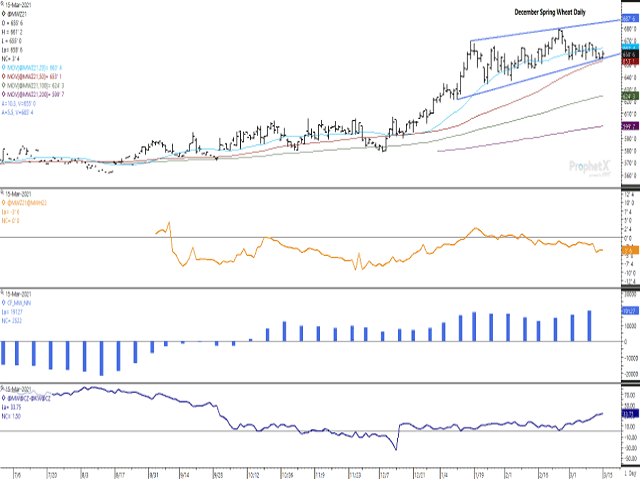Canada Markets
December Spring Wheat Technical Signals
During the past four weeks, the December MGEX spring wheat contract has traded within a 30-cent trading range. March 15 trade found support above the previous Friday's low of $6.54 1/4/bushel (bu), as well as the contract's 50-day moving average found at $6.53/bu. The session resulted in a 4 3/4-cent gain to $6.60/bushel, the first daily gain seen in four sessions.
The first study of the attached chart shows the contract's Dec21/March 22 futures spread at minus 3 1/4 cents. This spread represents a weak carry and traded as narrow as minus 2 1/2 cents this session. At the same time, this spread traded at an average of minus 11.4 cents during the past five years and an average of minus 9.5 cents on this date during the past 10 years. The current spread represents the weakest Dec/March spread seen on this date since March 15, 2008, or 13 years.
P[L1] D[0x0] M[300x250] OOP[F] ADUNIT[] T[]
The blue bars of the histogram of the middle study show the noncommercial net-long futures position growing for three consecutive weeks to 19,127 contracts as of March 9. This is more than two times the 8,341 contracts net-long reported as of the end of December, while not seen on this chart, is the largest noncommercial net-long position seen since June 2014. This is reported at a time when the noncommercial net-long position in Chicago soft red winter has fallen to its lowest point in 11 weeks, while this position is seen at the lowest level held in 13 weeks for Kansas City hard red winter wheat, as of March 9 CFTC data.
The lower study represents the continuous Dec HRS/Dec HRW spread, which is viewed as a potential proxy for the demand for the higher quality HRS relative to the lower protein HRW. This spread was as weak as 2 1/4 cents on Feb. 24 (Dec. HRS over Dec. HRW) while has strengthened to 35 cents on March 15. This is the strongest spread seen on this continuous chart seen since Sept. 30. During the past three crop years (Aug-July), the continuous spread across all contracts has averaged $1.01 (HRS over HRW). This signals the potential for spring wheat to continue to strengthen relative to hard red winter wheat.
Cliff Jamieson can be reached at cliff.jamieson@dtn.com
Follow him on Twitter @Cliff Jamieson
(c) Copyright 2021 DTN, LLC. All rights reserved.






Comments
To comment, please Log In or Join our Community .